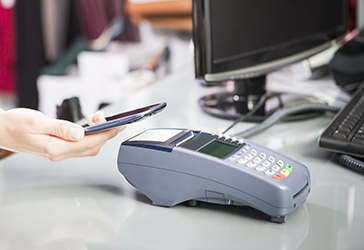
Scams happen more often than you think, especially with modern-day technology. Now, you don't need to leave your home to fall victim to them.
If you're like most people, you own a phone or computer or have an email address. With those technologies in mind, you've also most likely been an attempted scam victim. One of the most common types of scams is phishing.
If you know about phishing, you might assume it's easy to recognize and avoid; however, phishing scams have advanced, and even the most diligent of us can fall victim when we lack sufficient information. If you're unsure whether someone is phishing you, chances are they are.
Below, we'll cover what you need to know about phishing so you can recognize and avoid it.
How Phishing Works
Phishing schemes usually involve "spoofing," in which scammers disguise their identity so that you'll give them private and personal information. For example, if someone pretends to email you from your bank, they're actively spoofing you.
Phishing scams use this technique to get you to verify your information by logging into a fake account or spoofed website. By doing so, you're actively giving sensitive information to criminals who will exploit it.
Phishing can also happen over phone calls or text messages. Someone may pretend to be a representative at your bank or phone company and ask you to confirm your information, such as your social security number or password.
Essentially, phishing looks like the following:
- You receive an email, phone call, or text message.
- Email, phone calls, or texts prompt you to visit a website or divulge sensitive information like passwords or financial information.
- Once you provide that information, the scammer uses it to steal money or your identity.
You should be aware of the following types of phishing scams:
- Vishing: Phishing scams that use someone's voice, such as phone calls, voice emails, or voice over Internet protocol (VoIP) calls.
- Smishing: Phishing scams that occur through SMS text messages.
- Pharming: Malicious code is installed on the victim's device, directing them towards a fake website the attacker controls.
Signs of Phishing Attempts
One of the best ways to protect yourself and others from phishing attempts is by recognizing the signs of phishing.
If an email, text, or phone call falls into one or more of the following categories, you're likely being phished:
- Asking you to verify your personal or financial information.
- Asking you to update your account information.
- Notifying you of suspicious activity.
- Claiming there's a problem with a payment, payment information, or your account.
- Telling you there's a problem with an invoice that you don't recognize.
- Including links to make a payment.
- Saying you're eligible for money like government refunds or you've won a prize.
- Offering coupons.
Phishing attempts may spoof companies you already have a relationship with. For example, they may mimic your bank's email address and make it look like an official email. If the email address doesn't look right, it probably isn't.
Preventative Measures Against Phishing
Fortunately, there are some things you can do to decrease your risk of being phished.
- Always be skeptical when you receive a phone call, email, or text message.
- Double-check email addresses, website addresses, and phone numbers.
- Make sure links are safe using Google's Transparency Report, which checks links for safety.
- Never divulge personal or financial information over the phone or in an email.
- Use multi-factor authentication, which involves using a password or PIN, confirming your login via email or text, or using a fingerprint scan or face ID.
- Protect your computer with security software.
- Set your devices to update with new software updates automatically.
- If you're unsure if a call or email is a phishing attempt, double-check by calling your account's official phone number listed online. If it's from a friend or colleague, double-check with them first.
Takeaway
Phishing attempts are everywhere these days. Everyone thinks it will never happen to them. Still, we make mistakes as people, and these scammers are unfortunately becoming more sophisticated.
Staying educated and informed is essential to avoiding these scams and maintaining device security. Talk to your friends and family to ensure that they're up-to-date on phishing, too.





